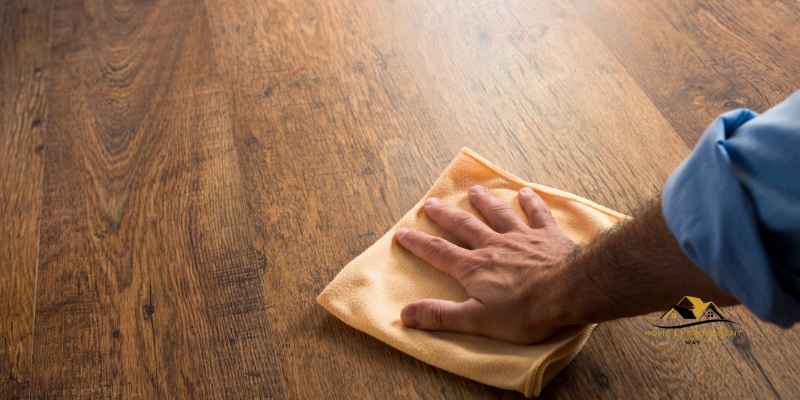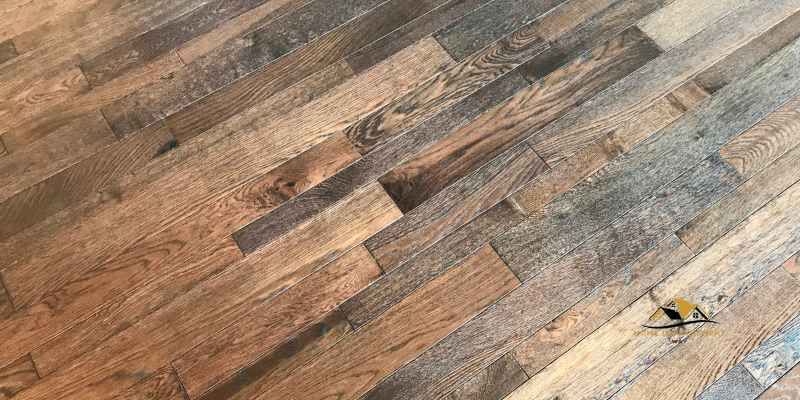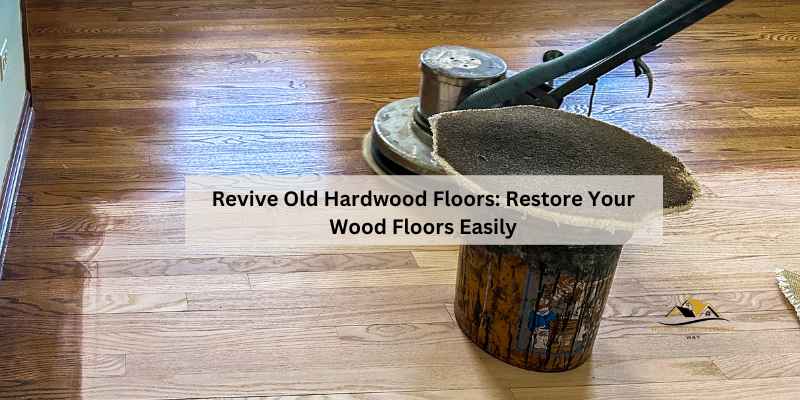Revive old hardwood floors by thoroughly cleaning and sanding them to restore their original beauty. Start by moving furniture and vacuuming the floors, then use a floor sander with heavy grit sandpaper followed by light grit sandpaper to sand in the direction of the grain for a refreshed look.
If the floors are in need of more extensive care, consider buffing, polishing, or refinishing to bring them back to life. By following these steps, you can revitalize your hardwood floors and enhance the overall appearance of your space.
Methods For Restoring Hardwood Floors
Restoring old hardwood floors can bring back their original beauty and luster. There are several methods for restoring hardwood floors, each offering unique benefits depending on the condition of the floor. From sanding and refinishing to buffing and polishing, homeowners have multiple options to revive their worn-out hardwood floors.
Sanding And Refinishing
Sanding and refinishing is a popular method for restoring hardwood floors. This process involves removing the old finish and surface layer of the wood through sanding. Once the old finish is stripped away, a new stain and protective coating are applied, providing a fresh and renewed appearance to the floor.
Buffing And Polishing
Buffing and polishing offer a non-invasive approach to restoring hardwood floors. This method involves using a commercial-grade buffer to gently abrade the floor’s surface, removing minor scratches and imperfections. Following the buffing process, a high-quality wood floor polishing sealant is applied to enhance the floor’s shine and protect it from future damage.
Rejuvenating Wood Floor Restore
Rejuvenating wood floor restore products provide an alternative to traditional refinishing methods. These specially formulated solutions penetrate the wood to revive its natural color and sheen, effectively concealing minor surface blemishes and revitalizing the overall appearance of the floor. This method is ideal for homeowners seeking a quick and cost-effective way to breathe new life into their hardwood floors.
Recoating Without Sanding
Recoating without sanding is a convenient method for maintaining the beauty of hardwood floors. This approach involves applying a new layer of finish directly over the existing one, without the need for extensive sanding. Recoating can effectively restore the floor’s luster and provide added protection, making it a suitable option for floors with minimal wear and tear.
Step-by-step Restoration Process

- Begin by clearing the room of all furniture to create a clean workspace.
- Thoroughly vacuum and mop the hardwood floors to remove any dust and debris.
- Use a floor sander with ‘heavy grit’ sandpaper to sand the floors in the direction of the grain.
- Switch to ‘light grit’ sandpaper for a finer finish, ensuring all varnish is removed.
- Clean the floor surface to remove any remaining dust and debris.
- Apply a sealant to protect the wood and enhance its durability.
- Finish by applying a coat of varnish or polyurethane for a glossy and long-lasting finish.
DIY Vs. Professional Restoration
When it comes to reviving old hardwood floors, you have two main options: DIY restoration or hiring professionals. Each approach has its own set of advantages and benefits, depending on your skill level, time availability, and budget.
Advantages Of DIY Restoration
- Cost-effective: DIY restoration typically costs less as you won’t have to pay for professional services.
- Flexibility: You can work on your own schedule and take breaks as needed.
- Learning experience: DIY restoration allows you to learn new skills and gain a sense of accomplishment.
Benefits Of Hiring Professionals
- Expertise: Professionals have the knowledge and experience to handle complex restoration projects.
- Time-saving: Professionals can complete the job efficiently, saving you time and effort.
- Quality results: Professionals use professional-grade equipment and techniques for a high-quality finish.
Alternative Restoration Techniques
When it comes to reviving old hardwood floors, there are alternative restoration techniques that can breathe new life into your aging flooring. These methods can be effective for addressing specific issues such as stains and wear, without the need for a full refinishing. Let’s explore some alternative restoration techniques that can help you restore the beauty of your hardwood floors.
Using Vinegar And Warm Water
One alternative restoration technique for old hardwood floors involves using a mixture of vinegar and warm water. This natural solution can help to remove dirt and grime from the surface of the wood, leaving it looking refreshed and clean. To use this method, mix equal parts of white vinegar and warm water in a bucket. Then, dip a mop or cloth into the solution and gently clean the hardwood floors, ensuring not to oversaturate the wood.
Hydrogen Peroxide For Stain Removal
Another effective technique for addressing stains on old hardwood floors is using hydrogen peroxide. This powerful solution can help to lift and remove stubborn stains, restoring the natural beauty of the wood. To use hydrogen peroxide for stain removal, apply a small amount directly to the stained area and let it sit for a few minutes. Then, gently scrub the area with a soft cloth or brush, and wipe away the hydrogen peroxide with a clean, damp cloth.
Restoration By Hand
For targeted restoration of specific areas, a manual approach can be effective. Restoring old hardwood floors by hand involves sanding and refinishing small sections that may have excessive wear or damage. This technique allows for precise restoration of problem areas without the need to refinish the entire floor. By carefully sanding and refinishing worn spots, you can bring back the luster and beauty of your hardwood floors.
Challenges In Restoring Old Hardwood Floors
Restoring old hardwood floors can be a rewarding but challenging task. Over time, these floors may develop scratches, dullness, and wear that require special attention. It’s important to understand the specific challenges involved in reviving old hardwood floors to ensure a successful restoration process.
Dealing With Scratches And Dullness
Scratches and dullness are common issues with old hardwood floors. These imperfections not only affect the aesthetic appeal but also the overall durability of the flooring. Addressing these challenges requires careful consideration of the floor’s condition and the appropriate restoration techniques.
Restoring Very Old Floors
Restoring very old hardwood floors presents unique challenges due to decades of wear and tear. The wood may have deep-seated damage, extensive discoloration, or structural issues that require specialized restoration methods. It’s essential to assess the age and condition of the floors to determine the most suitable approach for restoration.
Maintenance And Care After Restoration

To maintain and care for your restored hardwood floors, regularly sweep and mop with a gentle cleaner. Avoid harsh chemicals to preserve the finish and reapply sealant as needed for protection. Protect high-traffic areas with rugs and promptly clean up spills to prevent damage.
Regular Cleaning And Polishing
After restoring your old hardwood floors, it is essential to maintain them to keep them looking great. Regular cleaning and polishing are two essential tasks that you should perform to keep your floors in good condition. To clean the floors, use a soft-bristled broom or a vacuum cleaner with a hardwood floor attachment. You can also use a microfiber mop to remove any dirt or dust particles. It is recommended to clean the floors at least once a week to prevent the accumulation of dirt.
Once you have cleaned the floors, it is time to polish them. Polishing the floors will help to restore their shine and protect them from scratches. You can use a hardwood floor polish that is specifically designed for your type of flooring. Apply the polish with a microfiber mop or a soft cloth and spread it evenly across the floor. Allow the polish to dry for a few hours before walking on the floor.
Protective Measures For Longevity
In addition to regular cleaning and polishing, there are other measures you can take to protect your newly restored hardwood floors. Here are some tips:
- Place doormats at entryways to prevent dirt and debris from being tracked onto the floors.
- Use furniture pads to prevent scratches and dents from heavy furniture.
- Avoid wearing high heels or shoes with sharp objects that can scratch the floors.
- Keep pet nails trimmed to prevent scratches.
- Use a humidifier to maintain a consistent level of humidity, as fluctuating humidity levels can cause the floors to warp or crack.
By taking these protective measures, you can extend the longevity of your newly restored hardwood floors and keep them looking great for years to come.
Frequently Asked Questions
How To Restore An Old Wooden Floor?
To restore an old wooden floor, move furniture and clean the floor thoroughly. Use a floor sander with heavy grit sandpaper, sand in the direction of the grain, then repeat with light grit sandpaper. Finally, apply a polyurethane finish for a revitalized look.
How Do I Bring My Old Hardwood Floors Back To Life?
To bring old hardwood floors back to life, clean thoroughly, sand with a floor sander, and finish with a sealing coat.
How Do You Revive Hardwood Floors Without Refinishing?
Revive hardwood floors without refinishing by buffing and polishing with a commercial-grade buffer. Use a hardwood floor polishing sealant and clean marks with toothpaste. Apply wood floor cleaner or oil soap for a high-gloss finish.
How Do You Make Old Wood Floors Look Good Again?
To revive old wood floors, remove furniture, clean thoroughly, sand in the direction of the grain, apply a rejuvenating product, and seal. Alternatively, buff and polish, or invest in a full sand and refinish depending on the floor’s condition. Use wood floor cleaner or oil soap for a high-gloss clean.
Conclusion
Reviving old hardwood floors is a rewarding process that can bring new life to your home. By following the steps outlined in this guide, you can restore the beauty and charm of your hardwood floors. With the right tools and techniques, you can achieve stunning results and enjoy the timeless appeal of your rejuvenated floors for years to come.


